Properties
| Storage Buffer | PBS pH7.4, 50% glycerol, 0.09% sodium azide *Storage buffer may change when conjugated |
| Storage Temperature | -20ºC, Conjugated antibodies should be stored according to the product label |
| Shipping Temperature | Blue Ice or 4ºC |
| Purification | Protein G Purified |
| Clonality | Monoclonal |
| Clone Number | N15/4 (Formerly sold as S15-4) |
| Isotype | IgG2a |
| Specificity | Detects ~70kDa. |
| Cite This Product | StressMarq Biosciences Cat# SMC-319, RRID: AB_2287905 |
| Certificate of Analysis | 1 µg/ml of SMC-319 was sufficient for detection of TrpV3 in 10 µg of COS-1 cell lysate transiently transfected with TrpV3 by colorimetric immunoblot analysis using Goat anti-mouse IgG:HRP as the secondary antibody. |
Biological Description
| Alternative Names | 1110036I10Rik Antibody, MGC124324 Antibody, MGC124325 Antibody, Transient receptor potential cation channel subfamily V member 3 Antibody, TrpV3 Antibody, Trpv3 heat sensitive channel Antibody, TRPV3_HUMAN Antibody, Vanilloid receptor 3 Antibody, Vanilloid receptor like 3 Antibody, Vanilloid receptor-like 3 Antibody, vanilloid receptor-related osmotically activated channel protein Antibody, VRL 3,VRL-3 Antibody, VRL3 Antibody |
| Research Areas | Ion Channels, Neuroscience, Transient Receptor Potential (TRP) Channels |
| Cellular Localization | Membrane |
| Accession Number | NP_001020928 |
| Gene ID | 497948 |
| Swiss Prot | Q4QYD9 |
| Scientific Background | The TRPV3 protein belongs to a family of nonselective cation channels that function in a variety of processes, including temperature sensation and vasoregulation. The thermosensitive members of this family are expressed in subsets of sensory neurons that terminate in the skin, and are activated at distinct physiological temperatures. This channel is activated at temperatures between 22 and 40 degrees C. The gene lies in close proximity to another family member (TRPV1) gene on chromosome 17, and the two encoded proteins are thought to associate with each other to form heteromeric channels (1, 2). |
| References |
1. Masamoto Y., Kawabata F., Fushiki T. (2009) Biosci. Biotechnol. Biochem. 73(5): 1021-1027. 2. Xiao R., et al. (2008) J Biol Chem. 283(10): 6162-6174. |
Product Images
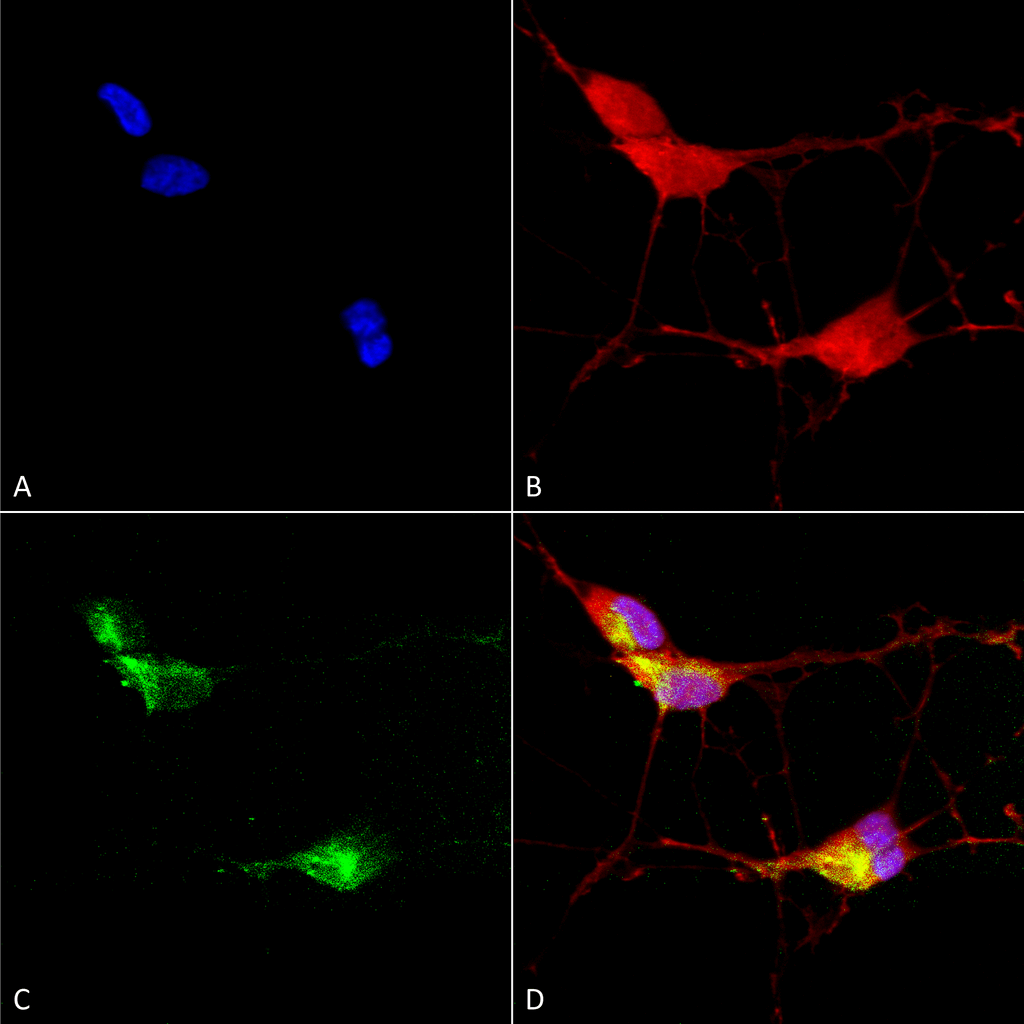
Immunocytochemistry/Immunofluorescence analysis using Mouse Anti-TrpV3 Monoclonal Antibody, Clone N15/4 (SMC-319). Tissue: Neuroblastoma cells (SH-SY5Y). Species: Human. Fixation: 4% PFA for 15 min. Primary Antibody: Mouse Anti-TrpV3 Monoclonal Antibody (SMC-319) at 1:100 for overnight at 4°C with slow rocking. Secondary Antibody: AlexaFluor 488 at 1:1000 for 1 hour at RT. Counterstain: Phalloidin-iFluor 647 (red) F-Actin stain; Hoechst (blue) nuclear stain at 1:800, 1.6mM for 20 min at RT. (A) Hoechst (blue) nuclear stain. (B) Phalloidin-iFluor 647 (red) F-Actin stain. (C) TrpV3 Antibody (D) Composite.
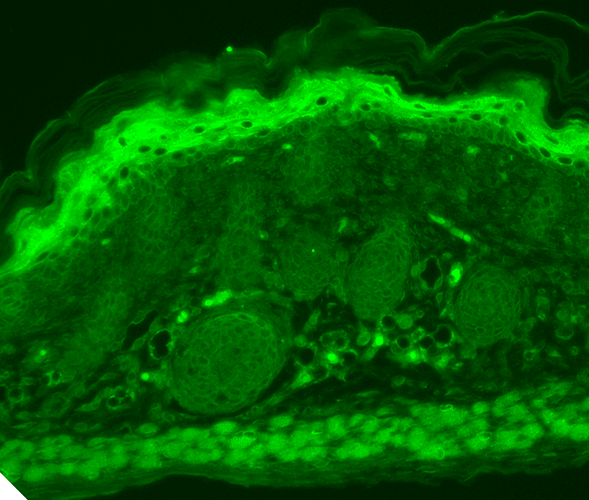
Immunohistochemistry analysis using Mouse Anti-TrpV3 Monoclonal Antibody, Clone N15/4 (SMC-319). Tissue: backskin. Species: Mouse. Fixation: Bouin’s Fixative and paraffin-embedded. Primary Antibody: Mouse Anti-TrpV3 Monoclonal Antibody (SMC-319) at 1:100 for 1 hour at RT. Secondary Antibody: FITC Goat Anti-Mouse (green) at 1:50 for 1 hour at RT.
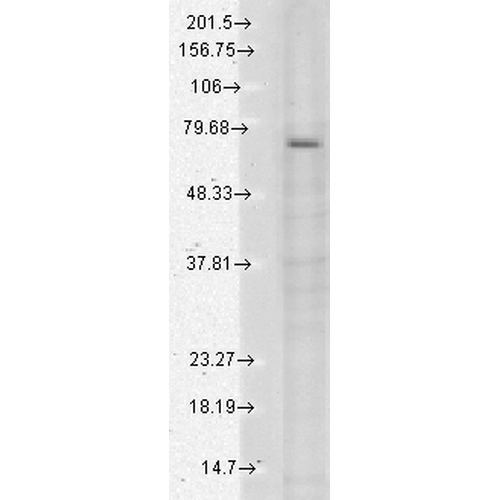
Western Blot analysis of Human Cell lysates showing detection of TrpV3 protein using Mouse Anti-TrpV3 Monoclonal Antibody, Clone N15/4 (SMC-319). Load: 15 µg. Block: 1.5% BSA for 30 minutes at RT. Primary Antibody: Mouse Anti-TrpV3 Monoclonal Antibody (SMC-319) at 1:1000 for 2 hours at RT. Secondary Antibody: Sheep Anti-Mouse IgG: HRP for 1 hour at RT.
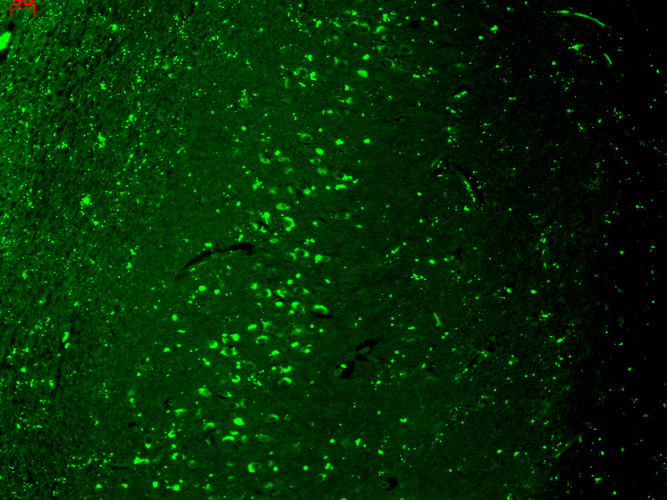
Immunohistochemistry analysis using Mouse Anti-TrpV3 Monoclonal Antibody, Clone N15/4 (SMC-319). Tissue: hippocampus. Species: Human. Fixation: Bouin’s Fixative and paraffin-embedded. Primary Antibody: Mouse Anti-TrpV3 Monoclonal Antibody (SMC-319) at 1:1000 for 1 hour at RT. Secondary Antibody: FITC Goat Anti-Mouse (green) at 1:50 for 1 hour at RT.
![<p>Western blot analysis with Stressmarq’s Mouse Anti-TrpV3 Monoclonal Antibody, Clone N15/4 (SMC-319) showing detection of Human TrpV3 protein in a transient over-expression lysate (OriGene LY403422). Block: 2% skim milk + 2% BSA. Primary Antibody: Mouse Anti-Rat TrpV3 Monoclonal [N15/4] (SMC-319) at 1:1000 for 2 hours at RT. Secondary Antibody: Goat anti-mouse IgG:HRP at 1:5000 for 1 hour at RT. Color Development: Chemiluminescent for HRP (Moss) for 30 sec in RT. Exposed 0.5 seconds. NOTE: The ORF clone contains a C-term DDK tag; results were confirmed using Anti-DDK antibody (OriGene TA592569), showing laddering below target is related to C-term fragments of the TRPV3 protein (data not shown).</p>](https://www.stressmarq.com/wp-content/uploads/SMC-319_TRPV3_Antibody_N15-4_WB_Human_Overexpression-Lysate_1.png)
Western blot analysis with Stressmarq’s Mouse Anti-TrpV3 Monoclonal Antibody, Clone N15/4 (SMC-319) showing detection of Human TrpV3 protein in a transient over-expression lysate (OriGene LY403422). Block: 2% skim milk + 2% BSA. Primary Antibody: Mouse Anti-Rat TrpV3 Monoclonal [N15/4] (SMC-319) at 1:1000 for 2 hours at RT. Secondary Antibody: Goat anti-mouse IgG:HRP at 1:5000 for 1 hour at RT. Color Development: Chemiluminescent for HRP (Moss) for 30 sec in RT. Exposed 0.5 seconds. NOTE: The ORF clone contains a C-term DDK tag; results were confirmed using Anti-DDK antibody (OriGene TA592569), showing laddering below target is related to C-term fragments of the TRPV3 protein (data not shown).

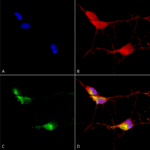




















StressMarq Biosciences :
Based on validation through cited publications.